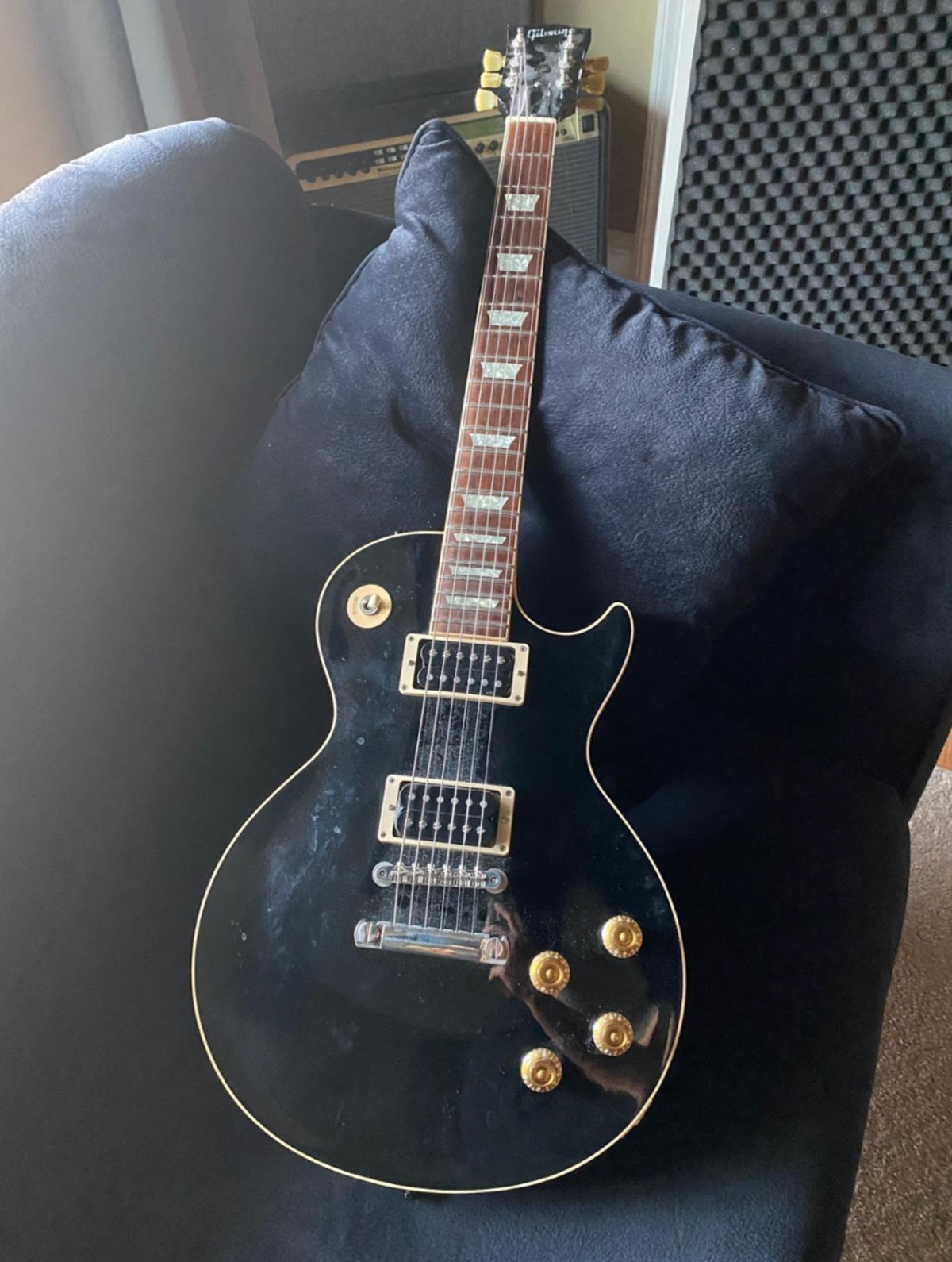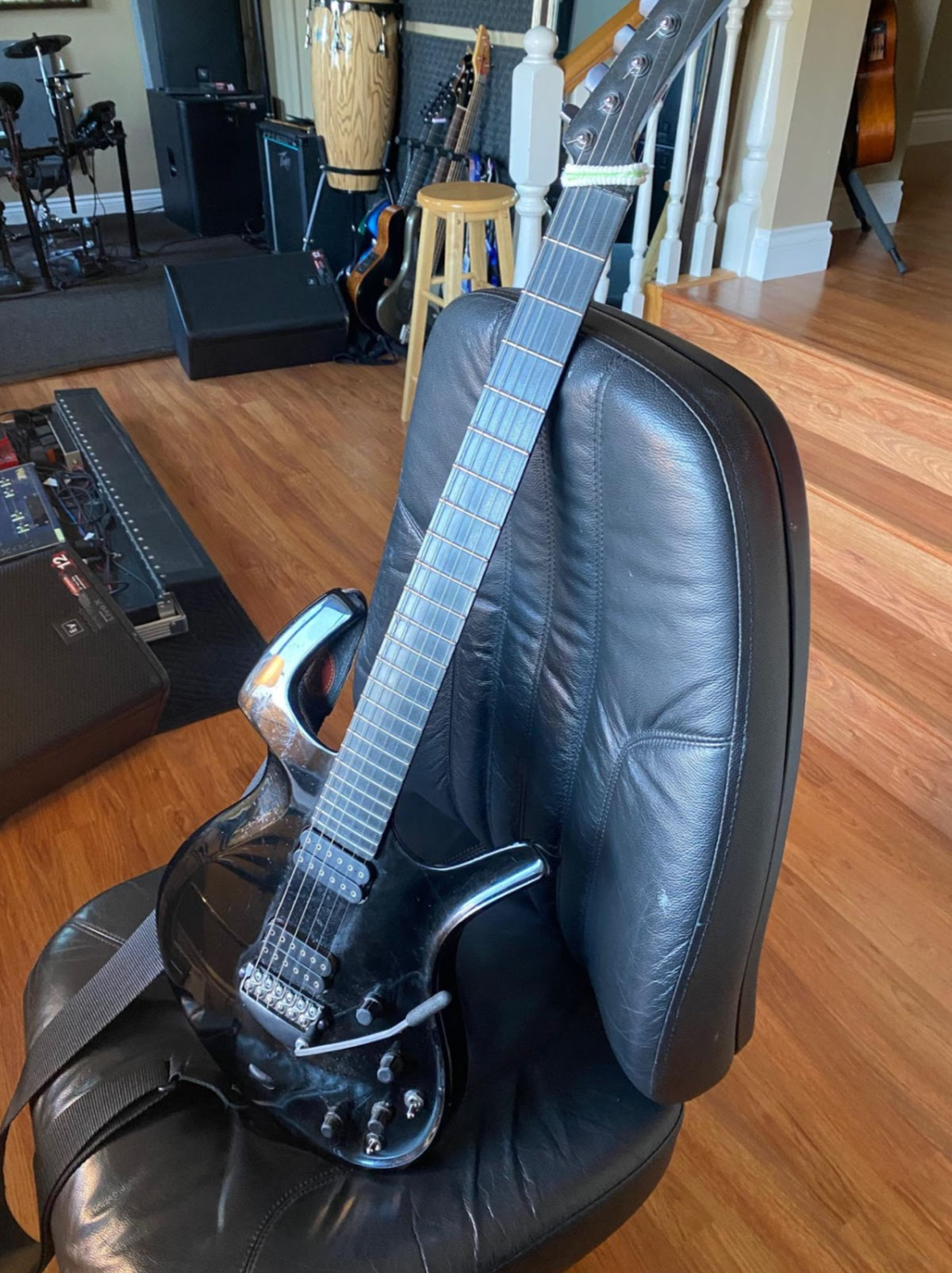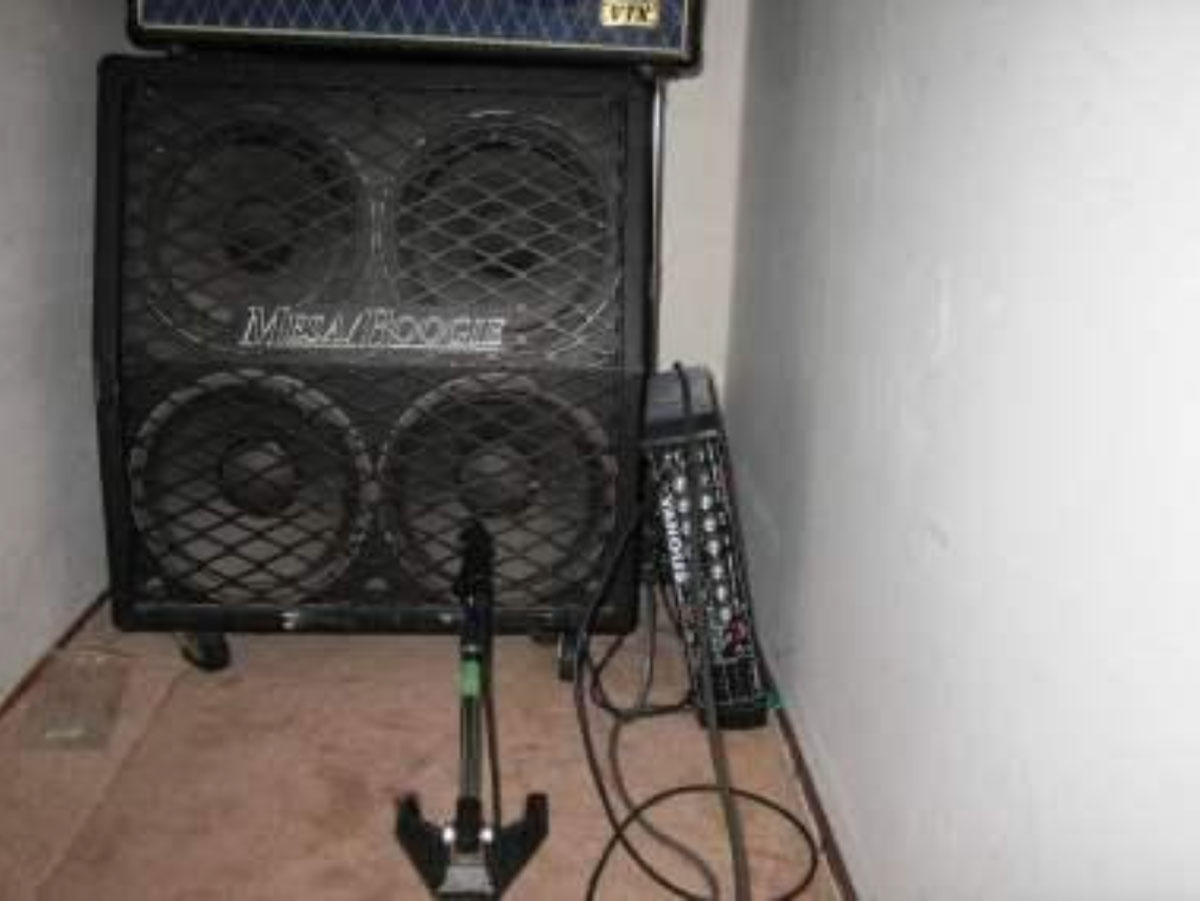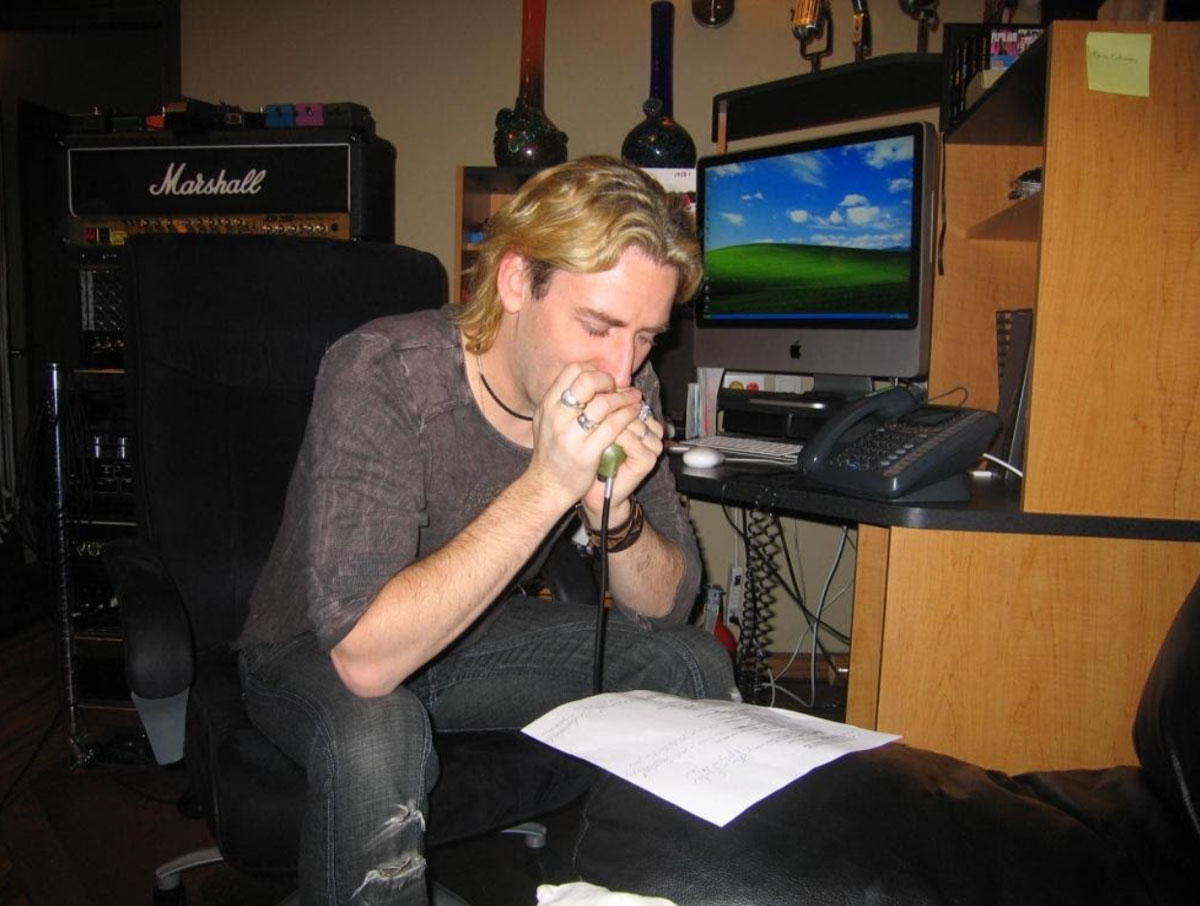
Hailing from Vancouver, Canada, fusion guitarist and virtuoso Dave Martone has enjoyed a fruitful career performing alongside the likes of Marty Friedman, Michael Angelo Batio, Paul Gilbert and Mike Portnoy, and as a record producer and solo artist in his own right.
As his two solo albums – 2008's Clean and 2015's Nacimiento – exhibit, Martone's ability is not limited by genre or playing style. Whether it's fingerstyle acoustic guitar – as heard in his cover of Mason Williams' Classical Gas – or the Latin-influenced shred of Bossa Dorado, his playing impresses in any setting.
It's the heavier side of playing he deploys in his latest collaboration, however. Teaming up with Canadian rock heavyweights Nickelback for a surprise cover of The Devil Went Down to Georgia, Martone helps reinvent the Charlie Daniels Band classic as a chug-fueled, sweep-ridden face-melter.
We caught up with Martone to discuss the cover's origins, the gear he employed for the recording, and how he converted those classic fiddle lines into parts fit for electric guitar.
How did the collaboration between you and Nickelback come about?
“My group Martone and Nickelback share the same fantastic drummer named Daniel Adair. Daniel and I have been playing music together for over 20 years and he has recorded drums on all of the Martone albums except one.
“Some years back when I was signed to Magna Carta Records from New York we had the idea to have Chad [Kroeger] guest on one of our records. We needed a song and I thought The Devil Went Down to Georgia would be a perfect fit!
Get The Pick Newsletter
All the latest guitar news, interviews, lessons, reviews, deals and more, direct to your inbox!
“So we did the rough bed tracks at my studio and the vocals at Chad's studio. Once the track was complete, I tried to push the idea of having the track on the next Martone album but the record company at the time didn’t go for the pitch. So the song was shelved.
“It was frustrating. Some years went by and I was playing at a club in Vancouver that Chad frequents. He was hosting a private party downstairs with his peeps and invited me down after my set. I went down and we were chatting.
When I put my mind to something, I am stubborn as hell and just get it done however I can
“It came to a point where myself, Chad and Chris Baseford [Recording Engineer for Nickelback] were chatting and Chad said, “Monday. Let's finish this track on Monday.” He wanted me to redo all the rhythm guitars through the Nickelback rig. I re-tracked the rhythm guitars, Chris mixed it a few weeks later and that was that.
“Then fast-forward maybe half a year I receive a text from Chad asking if they can release the tune to radio to launch their summer tour. He also mentioned if it was cool it said… ‘Nickelback featuring Dave Martone’. I said yes and that was it.”
The original Charlie Daniels version contains some pretty virtuosic fiddle playing. Did you know this would translate well to electric guitar before attempting it?
“In all honesty, that didn’t matter at all. I've been used to transcribing songs from the likes of Brahms, Bach, Rachmaninoff for years, so when I put my mind to something, I am stubborn as hell and just get it done however I can.
“Some of the fingering of the melody was weird on the guitar and I made a few attempts at finding the best way to play something. The lick at 2:30 was challenging because of the stretching on both strings, but that was the way I ended up playing that passage.”
The middle section is quite a chug-worthy take on the original. Who had the idea behind this section?
“First off, thanks for the props. I will answer it this way. When I was working the piece way back, I knew I was working it for a Nickelback tune. This is why it's in drop C tuning – many of their songs are. That was first and foremost.
“So basically I used the thought of, ‘What would Nickelback do here’, and with that I came up with the middle section riff in drop C. So I would say it was a collective effort!”
There are several guitar phrases throughout that are compositionally brand-new. Did you try to base these around licks in the original or was some of the writing free rein?
“I would have to say I tried to do whatever felt natural with the guitar phrases. For example, the first breakdown solo is not in the song at all. I took it upon myself to take out the lyrics and add this crazy arpeggio section that followed the chord progression in that section.
I usually develop the part as I am recording it. Then afterwards I relearn it, transcribe it and have it forever
“The chords are Dm, C, Gm, Dm, F, Gm, G#dim, A. I play it with both hands over the fretboard, and I have to say the part turned out pretty crazy!
“The chorus was totally different as well. We took out the lyrics, and made it this huge riff, and put excessive over-the-top playing into that section.
“I can say it was hugely refreshing to have the chance to unleash in a pop song that is played on the radio. It’s almost like it is not allowed anymore… So it felt damn good to let it rip in this song.”
The guitar parts are pretty jaw-dropping – how long did they take to record?
“Thank you again! They didn’t take too much time at all. The rhythm guitars were all done in 2 hours or so and are just drop C chunking double-tracked.
“The leads took longer to do since I usually develop the part as I am recording it. Then afterwards I relearn it, transcribe it and have it forever. The leads maybe took a day or two.”
What can you tell us about the guitars used to record the track?
“The rhythms were all done on a Les Paul Custom I believe. This was a guitar that my buddy Daniel gave to me years ago, and very fitting that it found its place on his other bands latest single! I think it is strung with D’Addario 11-54s.
“The leads were done on my Parker Fly from 1998. This guitar has pretty much recorded all or most of the leads on my albums and is usually strung with D’Addario 9-42s. The Fender Strat does rear its head on my personal recordings as well.”


What amps and effects did you use on the recording?
“All the rhythms were recorded direct with the Fractal Axe-Fx using the Bogner Uberschall amp. There might have been an overdrive on in front of the amp in the unit but I remember asking to turn it off.
“That was it. Les Paul, cable, Fractal, line into Pro Tools. Done. These were recorded at Chad’s home studio with the brilliant engineer Chris Baseford.
“The leads were different. I recorded those at my home studio. I used a boutique head called the Vanous Evolution. They don't make them anymore, but I was able to get one like 20 years ago.
“I was able to find an old picture from the actual closet under the stairs where I recorded this lead tone. As you can see it was as single Shure SM57, to a Boogie 4x12 loaded with EV [Electro-Voice] and Celestion speakers. The Vanous head was hooked to this cab and in front of it were two pedals.
“The DigiTech Whammy got used in the Devil solo, and also the Pigtronix Envelope Phaser, which gave the lead sound a little character. That was it. Delays and reverbs were added to the audio guitar files in mixdown.”

Some of the lyrics have been rewritten with guitar in mind. Did you have any input on the lyric-swapping or was that all Chad’s doing?
“I came to Chad with a rough version having the fiddle changed out for the guitar. He tweaked a few things to make it cooler for delivery with his voice… which I think sounds like the perfect Marlboro Man sound. Perfect for the track.
“He doubled his voice with the Shure Bullet Mic to get that Devil Sound in sections. Here is an actual shot right from the session while doing the take.”

Do you have any other high-profile collaborations in the works?
“I just heard from Joe Satriani and his manager Mick. They wanted me to be involved with something that will be released soon with a bunch of other guitarists. [Martone's jam over Joe Satriani's Premonitions has since been released on Satriani's YouTube channel]
“Other than that, I am producing clients in my studio and continually working on my next release.
“I had such a wonderful experience doing this song with the band. They are all awesome brothers and I wish them continued success with Nickelback. I was honored to be a part of this release with them. Thank you Chad, Mike, Ryan and Daniel. You are the best!”
Sam was Staff Writer at GuitarWorld.com from 2019 to 2023, and also created content for Total Guitar, Guitarist and Guitar Player. He has well over 15 years of guitar playing under his belt, as well as a degree in Music Technology (Mixing and Mastering). He's a metalhead through and through, but has a thorough appreciation for all genres of music. In his spare time, Sam creates point-of-view guitar lesson videos on YouTube under the name Sightline Guitar.
Weezer’s first show was opening for Keanu Reeves’ band Dogstar. Now the John Wick star is set to play a villain in the Buddy Holly hitmakers’ forthcoming mockumentary
“Even the thought that Clapton might have seen a few seconds of my video feels surreal. But I’m truly honored”: Eric Clapton names Japanese neo-soul guitarist as one to watch











